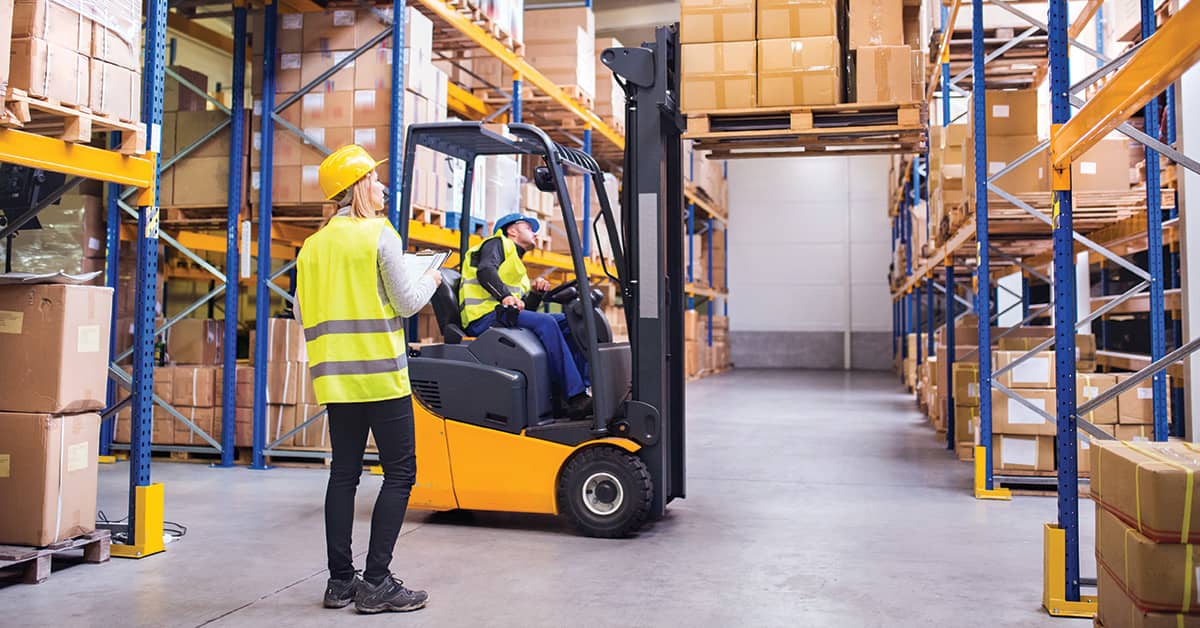Operating a forklift may seem straightforward, but it involves significant responsibility to ensure safety and efficiency. Whether you are a new operator or brushing up on skills, understanding the essentials of forklift training is crucial. This guide aims to equip you with the fundamental knowledge needed for safe operation and handling of these powerful machines.
This Easy Forklift Training Guide will delve into several key aspects that are essential for both novice and experienced operators. From understanding the basics of machine anatomy to mastering the art of maneuvering through complex warehouses, each section is crafted to enhance your knowledge and competence in operating a forklift safely.
Understanding Forklift Types and Controls
Getting to know your forklift is the first step towards safe operation. Forklifts vary widely in their design depending on their specific use-case—from standard counterbalance models to specialized rough terrain forklifts. Each type has unique controls and handling characteristics that operators must familiarize themselves with. Detailed training helps operators learn the functionalities specific to their machine including how to effectively manage lifting, lowering, and tilting of loads. The Importance of Having Forklift Training highlights how this foundational knowledge significantly reduces the risk of accidents.
Furthermore, it’s important for trainees to have hands-on practice under supervised conditions. This allows operators to experience real-world scenarios in a controlled environment, thereby solidifying their understanding of how each control affects the forklift’s operations.
The Importance of Regular Checks and Maintenance
Before and after every shift, conducting thorough checks of the forklift is essential. Operators should be trained on performing daily inspections that cover aspects such as tire pressure, fluid levels, brakes, and forks. It’s not just about checking if the machine starts; it’s crucial to ensure all parts are working optimally to prevent mechanical failures which could lead to accidents.
This routine might seem tedious but can considerably extend the lifespan of the machinery while ensuring safety standards are met. Regular maintenance checks also foster a thorough understanding of the mechanics behind forklifts, which is beneficial for troubleshooting potential issues before they escalate.
Navigating and Maneuvering Skills
One of the most challenging skills for forklift operators is learning how to efficiently navigate tight spaces and crowded aisles. It’s critical that beginners progress gradually from open spaces into more cluttered environments. Training should focus on spatial awareness, enhancing steering precision, and controlling speed according to varying loads and pathways.
Accident prevention techniques such as maintaining visibility over one’s load, using mirrors strategically, and understanding the turning radius are also vital. These maneuvers not only reduce risk but also improve confidence in managing intralogistics movements effectively within busy commercial settings.
Load Handling Techniques
Forklifts are primarily used for lifting, moving, and placing material loads that can be extremely heavy or awkwardly shaped. Teaching proper load handling is crucial since improper techniques can lead to dangerous tip-overs and materials spilling. Trainers should emphasize balanced loading principles, where loads are evenly distributed on forks and appropriately secured before movement begins.
In addition to understanding load capacity limits detailed in operator manuals, practical exercises should simulate different loading scenarios. These exercises help reinforce how an operator must adapt by changing tactics according to varying center-of-gravity in different loads.
Workplace Safety Protocols
A critical aspect of forklift training involves adhering to strict safety protocols specific to one’s workplace environment. This includes rules concerning right-of-way, designated pedestrian zones, and defined speed limits within the premises. Understanding these protocols during training ensures compliance with Occupational Safety & Health Administration regulations (OSHA), thereby maintaining a safe workplace for all employees.
Operators must be vigilant about these rules at all times as even minor compliances can prevent severe injuries or fatalities. In conjunction with recognizing emergency procedures and evacuation routes, workplace safety education serves as another layer of management against unforeseen incidents.
In conclusion, proper education through comprehensive training programs not only ensures that operators understand how to operate a forklift safely but also instills a responsibility toward promoting safety standards in warehouse settings. The benefits extend beyond merely preventing accidents—they contribute significantly towards increasing operational productivity through systematic work processes.
Your preparation doesn’t end here! Following this guide should be seen as setting foundational knowledge—ongoing education remains key as technologies advance and regulations update; always strive toward staying informed and sharpening your skills as a competent operator.




